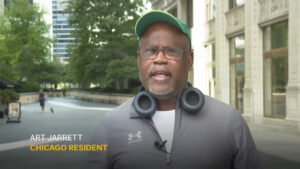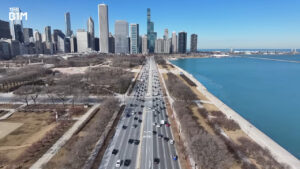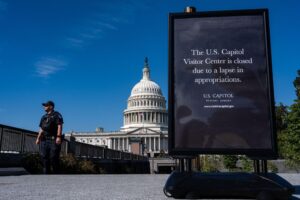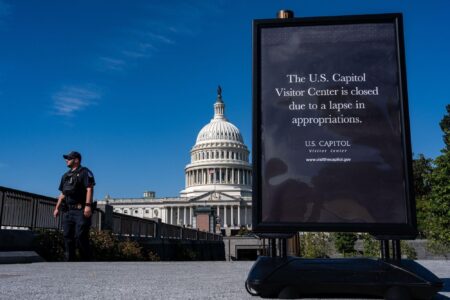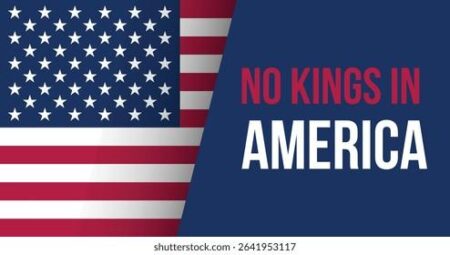Rethinking Political Polarization: What America Outside Washington DC Really Looks Like
Why Washington DC’s Political Climate Doesn’t Mirror the Nation’s Views
Washington DC is often depicted as the heart of America’s political strife, where ideological battles seem unending. Yet, this image exaggerates the true extent of political division across the country. While the capital’s political arena is marked by intense partisanship, surveys and studies show that most Americans hold more balanced and pragmatic perspectives. Unlike the polarized environment of DC, many citizens nationwide focus on practical issues rather than strict party allegiance, fostering a political atmosphere centered on problem-solving rather than entrenched conflict.
Several elements contribute to this broader, more moderate national outlook:
- Regional Variation: Diverse attitudes across states and communities dilute the extreme polarization seen in metropolitan political hubs.
- Local Bipartisanship: Cooperation between parties is common in municipal and state governments, especially on everyday concerns.
- Complex Issue Perspectives: Many voters hold nuanced opinions that cross traditional party boundaries, reflecting a blend of values.
| Demographic | Degree of Polarization | Main Priorities |
|---|---|---|
| Washington DC Residents | High | National Policy & Partisan Identity |
| Suburban Populations | Moderate | Community Well-being & Economic Growth |
| Rural Areas | Low to Moderate | Local Traditions & Practical Issues |
Decoding the Complexities of Political Polarization Across America
Media narratives often spotlight the sharp ideological divides among lawmakers and political leaders in Washington DC. However, the political attitudes of the general public paint a more intricate picture. Polarization is most acute among political insiders, where ideological litmus tests and partisan gridlock dominate. In contrast, many voters blend liberal and conservative views depending on the topic, revealing a multifaceted political landscape that defies simple categorization.
Factors fueling this divergence include:
- Urban-Rural Divide: Cities and politically active states tend to exhibit stronger polarization compared to suburban and rural regions.
- Media Influence: Consumption of partisan news amplifies perceived divisions but does not fully capture the public’s diverse opinions.
- Issue-Specific Alignments: Voters may support one party’s economic policies while favoring the other’s stance on social matters.
| Voter Segment | Political Leaning | Top Concerns |
|---|---|---|
| Suburban Independents | Mixed | Healthcare & Economic Security |
| Rural Conservatives | Conservative | Employment & Cultural Values |
| Urban Progressives | Liberal | Social Equity & Environmental Protection |
Closing the Divide Between Political Leaders and the American Public
Although Washington’s political scene is often characterized by extreme partisanship, the broader American populace tends to hold more moderate and pragmatic views. This gap underscores a significant disconnect between elected officials and everyday citizens. While Capitol Hill is frequently portrayed as a battleground of ideological extremes, most Americans prioritize practical solutions over rigid party doctrines. Bridging this divide demands renewed efforts to foster dialogue that transcends partisan boundaries and centers on the public’s real concerns.
Key approaches to reconnect political leadership with citizens include:
- Strengthening Civic Education: Equipping voters with comprehensive knowledge about policy implications to enhance informed decision-making.
- Encouraging Bipartisan Collaboration: Supporting joint initiatives on critical issues such as healthcare reform, education improvement, and infrastructure development.
- Boosting Government Transparency: Increasing openness and accountability to rebuild public confidence in political institutions.
Implementing these strategies can help align political priorities with the public’s aspirations for unity and progress.
| Public Concern | Elite Political Focus | Resulting Impact |
|---|---|---|
| Accessible Healthcare | Partisan Healthcare Disputes | Stalled Policy Advances |
| Quality Education | Ideological Conflicts Over Standards | Unequal Resource Distribution |
| Economic Security | Tax Policy Deadlock | Growing Income Disparities |
Effective Approaches to Foster Political Unity in a Fragmented Landscape
Overcoming political fragmentation requires more than conversation—it demands actionable strategies that build trust and shared understanding. Creating common experiences through community-driven projects and bipartisan efforts nurtures empathy and helps individuals appreciate perspectives beyond their own. Investing in education that promotes critical thinking and media literacy empowers citizens to identify misinformation, curbing the spread of divisive narratives. Transparent communication and accountability from political figures are essential to restoring public trust and enabling unity-focused initiatives to thrive.
Proven methods to encourage cohesion include:
- Community Dialogue Forums: Safe environments for open, respectful discussions among diverse groups.
- Joint Policymaking Efforts: Collaborative development of policies involving stakeholders from across the political spectrum.
- Cross-Party Leadership Programs: Mentorship initiatives that foster mutual understanding among emerging political leaders.
- Media Reform Campaigns: Support for unbiased journalism to improve the accuracy and fairness of information.
| Initiative | Expected Benefit |
|---|---|
| Community Dialogue Forums | Build Local Trust and Understanding |
| Collaborative Policymaking | Reduce Legislative Stalemates |
| Leadership Mentorship | Encourage Bipartisan Cooperation |
| Media Reform | Enhance Information Integrity |
Conclusion: Embracing a More Balanced Political Reality
Despite the widespread portrayal of America as deeply divided, the truth beyond Washington DC’s political theater is far more complex and less polarized. Research from institutions like the London School of Economics and Political Science’s USAPP project highlights that most Americans hold moderate views, challenging the narrative of extreme partisanship. Recognizing this gap between political elites and the general public is vital for fostering dialogue, compromise, and democratic resilience. As the national conversation evolves, acknowledging the broader population’s more centrist stance could pave the way for renewed unity and constructive policymaking.
